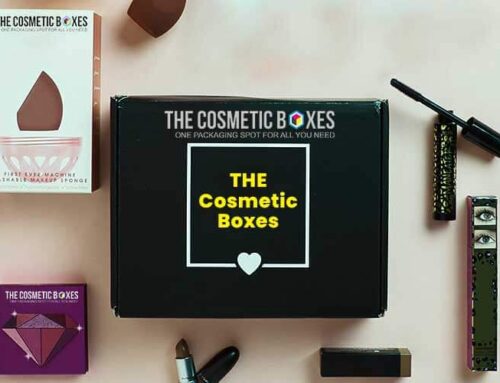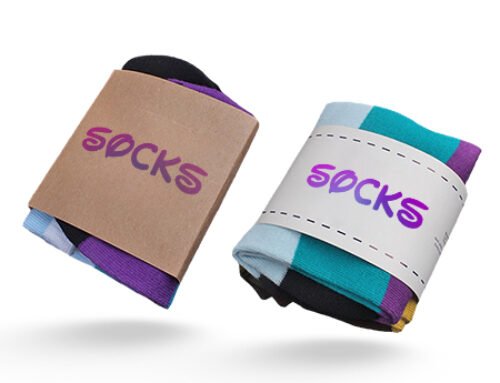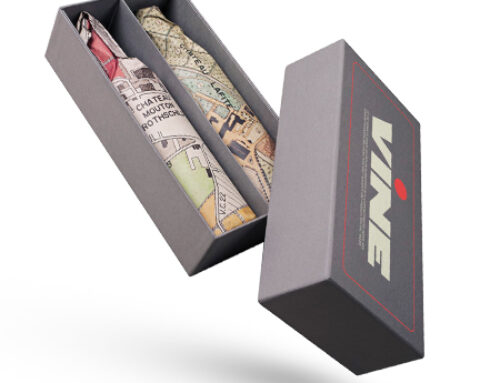Rigid Boxes are the perfect solution for your next packaging project. They’re made of durable, long-lasting cardboard and can be customized to fit any shape or size. So if you have a business that needs rigid boxes in an unlimited array of shapes, sizes, colors, patterns, or textures, then it’s time to get rigid!
What Are Rigid Boxes?
Boxes are used to store, transport, and ship products. They can be made of paperboard or corrugated fiberboard. These boxes come in various shapes and sizes depending on the use they will be put towards. A rigid box is a type of cardboard box that is strong enough to withstand stacking without collapsing over time. This type of packaging is typically used for high-volume shipments or items that need protection from damage during shipping. For instance, glassware, electronics, delicate hardware parts.
Rigid boxes are constructed with three walls – two vertical panels (sides) joined by one horizontal panel (top). The top flap has a lip around it, which holds the top flap down when closed, making it locked.
Why Do They Matter In The Shipping Industry?
Rigid boxes are used in the shipping industry to protect items from damage and ensure that they arrive at their destination safely. For this reason, shippers need to use them correctly. This blog post will discuss why rigid packaging matters and provide tips on properly packing them.
Rigid gift boxes come in different shapes and sizes, making it difficult to know what size box is appropriate.
Why Is It Important To Use A Premium Packaging Solution?
If you’re considering purchasing a product, the packaging is one of the first things that will catch your eye. It initially draws people in and can be instrumental in influencing their decision to buy. That’s why it’s important to use a premium packaging solution for your products.
A premium packaging solution will increase brand awareness and help improve sales conversion rates. It will increase consumer trust and loyalty through the quality presentation. There are many reasons why you should invest in this type of service.
The Benefits Of Using Rigid Boxes:
Rigid boxes are a great way to store your items in an efficient and easy-to-access manner. They come in many different shapes, sizes, and strengths. For example, they can be long or rectangular shaped for storing books to small square ones ideal for storing jewelry. The benefits of using rigid packaging include the following:
1) Better organization – You can stack them on top of each other when not in use which will minimize space usage in your home
2) Easy access – No more struggling with bulky totes where you have to take everything out to find something at the bottom
3) Durability – Rigid box materials are very strong, so they’ll hold up well over time.
How To Get Started With Rigid Boxes?
Packaging is a necessary part of the product. It is what customers see and interact with first before they use or consume it. Packaging also has the responsibility of protecting the product while in transit, storing, and displaying in retail stores. That’s why companies need to pay attention to packaging – because if your package does not meet all these requirements, you are losing money on wasted materials and potentially jeopardizing your brand image because you’re not giving consumers an excellent experience when shopping with you.
When choosing to package your products, two options are widely used: rigid boxes and corrugated cardboard boxes. Rigid boxes wholesale give off a more sophisticated feel compared to corrugated ones.

How To Choose The Right Box For Your Needs
Boxes are essential for moving and storing, but they can also be expensive and wasteful. If you’re looking to get the most out of your money while protecting your belongings, choosing the right box is essential. There is a wide variety of rigid boxes wholesale available on the market today, so we’ve compiled a list of things every shopper should consider before making their purchase:
How much stuff do I have?
Do I need small or large boxes?
What kind of items will I be packing?
What size will these items need to fit properly into my chosen box?
How fragile are my items for transit?
Will they require additional padding or protection?
Types Of Durable Packaging Materials:
Packaging is something that we don’t think about much. We buy our products, and then we get them in a box or plastic bag before we open them up and consume them. However, packaging plays a vital role in the product’s health because it can protect against contact with light, moisture, and air. Packaging also has a big impact on how long your things last – if you want to preserve milk for 30 days, you need to use glass jars instead of paper cartons like most people do today.
Challenges With Using These Types Of Boxes
The use of rigid boxes is a common practice in the packaging industry. Rigid boxes, such as cardboard and fiberboard, are suitable because they provide an economical and lightweight solution for packing items. However, several challenges come with using custom boxes. For one thing, these materials are not recyclable. There’s also the issue of rigidity which can make it difficult to pack fragile objects without damaging them during transit – something many companies aren’t willing to risk given their high-value products. Lastly, some consumers prefer using softer materials like foam or bubble wrap for certain goods such as breakables and electronics.
Cons Of Using A Rigid Box
There are many benefits to using rigid boxes, but there are also some cons. One of the main cons is that they can be more expensive than corrugated boxes. Another disadvantage is that it requires more storage space because it cannot fold down like corrugated cardboard boxes. This means you will need a larger warehouse to store your products if you choose to use these types of shipping containers. However, if you have an automated conveyor system in place at your warehouse or distribution center, then this may not be as big of an issue for you. Using rigid containers will increase the weight load capacity per container, which means fewer trips needed to transport your products from one location to another, saving both time and money.








Leave A Comment